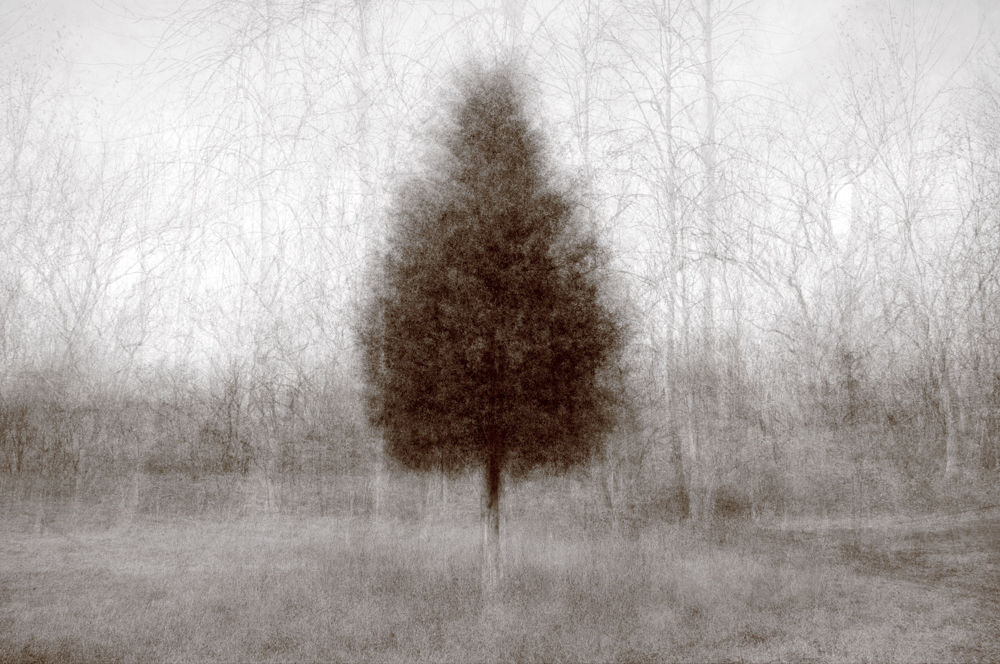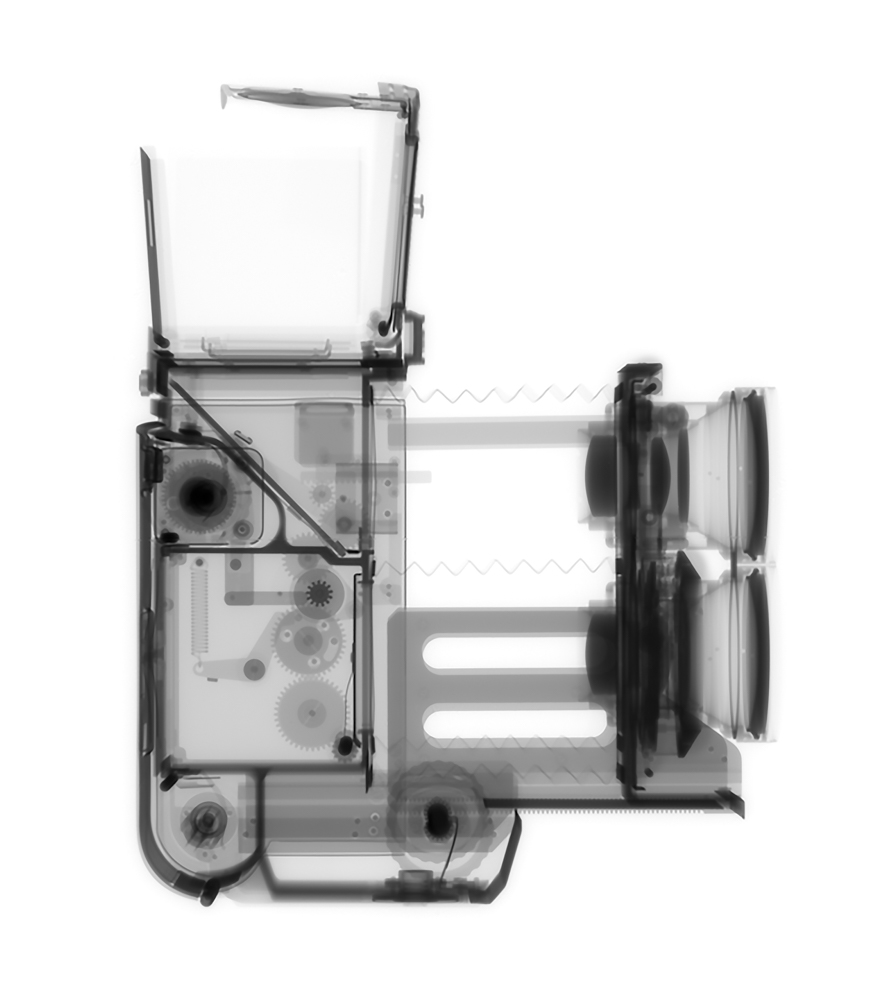Kent Krugh: The States Project: Ohio
Employing perhaps the most uncommon device in contemporary fine art photography – a flat-panel digital imaging x-ray detector – Kent Krugh allows viewers the rare opportunity to peer into the surprising interiors of cameras and the elegant internal structure of birds.
Krugh writes that the photographs in “Speciation” “explore the microevolution of cameras” and are “a metaphor about the limits of evolution.” In “Aviary X,” he marries x-ray imaging with conventional lens-based digital photography using a DSLR to create striking images that reveal evolution of a different sort. The photographs invite viewers to examine the deceptively fragile and delicate bone structures that somehow provide birds strength for breathtaking flight and aerobatics. These typologies of cameras and birds remind us of the complex and wondrous structures, often overlooked, that are at the heart of so many objects and creatures in our lives.
For his “inverse panorama” portraits of trees that comprise “Inside the Gate,” Krugh typically made between 10-22 exposures of each tree with a DSLR camera as he circumambulated each specimen. Later, in post-processing, he reinvented each tree through photomontage by assembling the many views with various degrees of transparency, creating a vibrant, intricately layered, ghostly and other-worldly arboretum.
As in “Speciation” and “Aviary X,” Krugh’s “Inside the Gate” goes beneath the surfaces of familiar photographic subjects to reveal an unfamiliar and challenging new terrain.
Kent Krugh is a fine art photographer, living and working in Greater Cincinnati, OH. He holds a B.A. in Physics (1977) from Ohio Northern University and an MS in Radiological Physics (1978) from the University of Cincinnati. He began a serious study of photography, eventually attending workshops in alternative processes with Dan Burkholder and Craig Barber.
His work has been exhibited in numerous exhibitions both national and international, at Cincinnati galleries and art centers; the Houston Center for Photography, TX; the Center for Fine Art Photography, Ft. Collins, CO; the Williamsburg Art and Historical Center, Brooklyn, NY; the Minneapolis Photo Center, MN; RayKo Photo Center, San Francisco, CA; in Guatemala City, Guatemala and Medellín, Colombia; and in four major festivals: the Fringe Festival in Cincinnati (2010); the FotoFest Biennal in Houston, TX (2012 and 2016); the FotoFocus Biennal (2012), Cincinnati, OH; and the Festival de la Luz (2016) Buenos Aires, Argentina.
He is the recipient of numerous awards and honors in both national and international print and portfolio competitions, including the “International Fine Art Photography Award”, Grand Prix de la Découverte, Jury Award of Merit, Experimental Category (2012). Krugh was a Photolucida Critical Mass Finalist in both 2012 and 2014. Krugh’s work is held in the collections of the Luz Austral Foundation, Buenos Aires; Cleveland Museum of Art, OH; the Portland Art Museum; the Cincinnati Art Museum; the Cleveland Institute of Art, OH; the Fitton Center for Creative Arts, Hamilton, OH; and the Methodist Hospital, Houston, TX. He is the author of several books, including “Inside the Gate” (Blue Sky Books, Portland, OR, 2014) and “Angel Oak”, an Artist Book in 3 limited editions (2013). He has also taught workshops in Colombia, in collaboration with the Colegiatura Colombiana del Diseño and Centro Colombiano Americano, under the auspices of the Universidad de Antioquia.
Inside the Gate
My portraits of trees are photomontages, and by virtue of the process used to create them, can be considered “inverse panoramas”, in that I circumambulate each tree, making many combined images of it through 360º degrees. The final composite photograph is an imaginary landscape where the graphic qualities of symmetry, complexity, and transparency are transformative.
When I select and emphasize an individual tree, my intention is not only to depict the tree as a physical object, but to cross through a threshold allowing the viewer to listen and explore and perhaps relate to the central figure in ways not before understood or realized. It is as if one opens a gate into another realm where time and space are collapsed.
In the making of these images, I am attracted to the tree by its form, size and setting. Often while driving, I spot a candidate to photograph and debate in my mind if I want to pull over and wade through the wet grass or simply continue home. It is the potential for that next print that drives my ambition to collect more images. Another tree for the collection. Another window into creation.
Speciation: Still a Camera
This work uses x-rays to explore the micro-evolution of cameras and is a metaphor about the limits of evolution. Form and media may have changed, but the camera is still a camera: a tool to create images by capturing light. Today’s sophisticated digital cameras look and operate far differently than the first cameras of the nineteenth century, however the essentials have not changed. The photographer points a contraption with a lens towards the subject to encode its likeness on a storage medium, be it film or digital sensor. This contraption has been manufactured in many wonderful and clever designs, the complexity usually hidden inside. This project is also an homage to the cameras I have owned, used, or handled. The tools of the trade, having faithfully imaged for decades, have themselves been imaged. The resulting images align with an inner desire to probe those unseen spaces and realms I sense exist, but do not observe with my eyes.
Aviary X
I heard a crash near the kitchen patio door and saw a cardinal lying on the deck. When I picked it up it was warm but lifeless. The feathers glimmered in the sunlight with a sheen that I did not suspect, and the bird became something other than what I had always known at a distance. Curious, I wondered how I might photograph it in a way that had not been tried before – a difficult assignment.
In medicine there are a variety of imaging modalities that can be used for diagnosis; different techniques that when juxtaposed will complement each other and provide a clearer understanding of the patient’s condition. X-ray is a modality that produces a transparent picture and reveals the unseen internal structure. With this in mind, I began a project where I photographed the bird with my DSLR and X-rayed it with a digital x-ray machine. The photograph and X-ray were opened in Photoshop, and I varied the blending mode and opacity so that both the delicate pattern and texture of the bird’s feathers and the internal skeleton could be seen.
Birds are often caged and kept from flying. Whereas an aviary is a large enclosure that confines birds but allows them to fly — a large environment that lets the soul soar. Something we all long for and some of us pray to keep.
Posts on Lenscratch may not be reproduced without the permission of the Lenscratch staff and the photographer.
Recommended
-
Salua Ares: Absense as FormNovember 29th, 2025
-
Ricardo Miguel Hernández: When the memory turns to dust and Beyond PainNovember 28th, 2025
-
Pamela Landau Connolly: Columbus DriveNovember 26th, 2025
-
KELIY ANDERSON-STALEY: Wilderness No longer at the Edge of ThingsNovember 19th, 2025
-
Jackie Mulder: Thought TrailsNovember 18th, 2025










































































